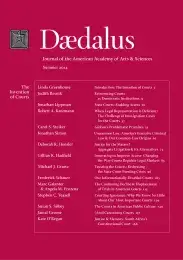The Courts in American Public Culture
In American public imagination, courts are powerful but also impotent. They are guardians of citizens' rights but also agents of corporate wealth; simultaneously the least dangerous branch and the ultimate arbiters of fairness and justice. After recounting the social science literature on the mixed reception of courts in American public culture, this essay explains how the contradictory embrace of courts and law by Americans is not a weakness or flaw, nor a mark of confusion or naïveté. Rather, Americans' paradoxical interpretations of courts and judges sustain rather than undermine our legal institutions. These opposing accounts are a source of institutional durability and power because they combine the historical and widespread aspirations for the rule of law with a pragmatic recognition of the limits of institutional practice; these sundry accounts balance an appreciation for the discipline of legal reasoning with desires for responsive, humane judgment.
What is the place of courts in American public culture? History provides us with two dominant–and contradictory–claims. First, we have Alexander Hamilton’s famous defense of the Supreme Court’s constitutional authority in Federalist No. 78. Because courts had power over neither purse (as does Congress) nor sword (as does the President), he assumed the court would be the weakest of the three branches in the new republic. Possessing “neither force nor will,” the judicial branch, according to Hamilton, “will always be the least dangerous to the political rights of the Constitution because it will be least in a capacity to annoy or injure them.” On the other hand, forty years later, Alexis de Tocqueville provided us with an opposing, though equally famous claim: that Supreme Court Justices are “all-powerful guardians” whose authority is both “enormous” and essential for holding the union together and maintaining the federal government’s supremacy. Rather than possessing the least capacity of the three branches of government to threaten the constitutional balance of power, the Supreme Court is in some ways the most powerful: “the Constitution would be a dead letter . . . without the justices’ cooperation.” The justices’ . . .
